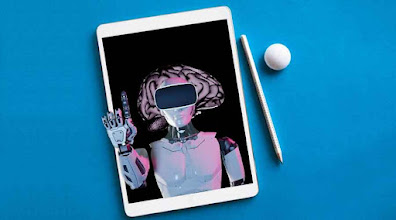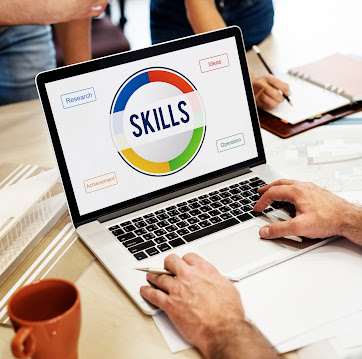Robotics and Automation Shaping Manufacturing, Healthcare, and Transportation Industries in 2024
Transformative Impact: Robotics and Automation Shaping Manufacturing, Healthcare, and Transportation Industries in 2024
Introduction:
In 2024, the integration of robotics and automation is reshaping traditional industries, revolutionizing processes, and driving unprecedented efficiency and innovation. This article explores the transformative impact of robotics and automation in three key sectors: manufacturing, healthcare, and transportation. From smart factories and robotic surgery to autonomous vehicles, the adoption of these technologies is not only optimizing operations but also redefining the future of work and enhancing overall societal well-being.
1. Manufacturing Industry: The Rise of Smart Factories:
1.1. Industry 4.0 and Smart Manufacturing:
The manufacturing sector is experiencing a paradigm shift with the advent of Industry 4.0, characterized by the integration of digital technologies into the manufacturing process. Smart factories leverage automation, data exchange, and AI to create a connected and intelligent production environment. In 2024, manufacturers are implementing advanced robotics, Internet of Things (IoT) devices, and cloud computing to optimize production, reduce downtime, and enhance overall operational efficiency.
1.2. Robotics in Production Processes:
Robotic systems have become integral to modern manufacturing processes, performing tasks with precision, speed, and consistency. In 2024, robots equipped with advanced sensors and machine learning capabilities are handling complex assembly tasks, quality control, and even collaborating with human workers on the factory floor. This not only improves productivity but also contributes to a safer and more ergonomic working environment.
1.3. Collaborative Robots (Cobots):
Collaborative robots, or cobots, are gaining prominence in manufacturing settings. These robots are designed to work alongside human workers, enhancing efficiency and flexibility. In 2024, cobots are utilized in tasks that require a combination of human dexterity and robotic precision. This collaborative approach fosters a synergistic relationship between human workers and machines, optimizing overall productivity.
1.4. 3D Printing and Additive Manufacturing:
The adoption of 3D printing and additive manufacturing technologies is transforming how products are designed and produced. In 2024, these technologies are not only used for rapid prototyping but also for manufacturing customized and complex components. The ability to create intricate structures with reduced waste is revolutionizing supply chain dynamics and offering manufacturers greater flexibility in adapting to changing market demands.
1.5. Predictive Maintenance and AI Optimization:
Automation in manufacturing goes beyond production processes; it extends to maintenance and optimization. In 2024, AI algorithms are employed for predictive maintenance, analyzing data from sensors to forecast equipment failures and schedule maintenance proactively. This reduces downtime, extends the lifespan of machinery, and contributes to overall cost savings for manufacturers.
1.6. Supply Chain Automation:
The integration of robotics and automation extends to supply chain management, optimizing logistics and distribution processes. Automated warehouses and robotic systems handle tasks such as order fulfillment, inventory management, and transportation. This results in faster and more accurate deliveries, reducing lead times and enhancing customer satisfaction.
2. Healthcare Industry: Robotics Revolutionizing Patient Care:
2.1. Robotic Surgery and Minimally Invasive Procedures:
In healthcare, robotics is revolutionizing surgical procedures, enabling precision and minimizing invasiveness. In 2024, robotic surgery systems equipped with advanced imaging and haptic feedback capabilities are employed for complex surgeries. These systems provide surgeons with enhanced dexterity and control, leading to smaller incisions, reduced recovery times, and improved patient outcomes.
2.2. Rehabilitation Robotics:
Rehabilitation robotics is transforming the way patients recover from injuries or surgeries. In 2024, robotic exoskeletons and assistive devices are used for physical therapy and rehabilitation. These technologies aid patients in regaining mobility and strength, offering personalized and targeted support for different rehabilitation needs.
2.3. Telemedicine and Remote Patient Monitoring:
Automation in healthcare is extending beyond clinical settings to remote patient monitoring and telemedicine. In 2024, AI-driven telehealth platforms and wearable devices equipped with sensors enable healthcare providers to remotely monitor patients' vital signs, chronic conditions, and adherence to treatment plans. This enhances the accessibility of healthcare services and improves the management of chronic diseases.
2.4. Pharmaceutical Automation and Drug Discovery:
The pharmaceutical industry is experiencing a shift towards automation in drug discovery and development. In 2024, robotic systems handle high-throughput screening, allowing for the rapid testing of potential drug candidates. AI algorithms analyze massive datasets to predict drug interactions, speeding up the drug development process and facilitating the discovery of novel treatments.
2.5. Robotic Assistance in Elderly Care:
With an aging population, robotic assistance in elderly care is becoming increasingly relevant. In 2024, robotic companions and assistive devices support elderly individuals in daily activities, medication management, and monitoring health conditions. These technologies enhance the quality of life for seniors and alleviate the burden on healthcare systems.
2.6. AI in Diagnostics and Imaging:
AI is revolutionizing medical diagnostics and imaging interpretation. In 2024, machine learning algorithms analyze medical images, such as X-rays, MRIs, and CT scans, to detect anomalies and assist healthcare professionals in accurate diagnoses. This not only improves diagnostic accuracy but also accelerates the interpretation of complex medical images.
3. Transportation Industry: The Age of Autonomous Vehicles:
3.1. Autonomous Vehicles and Intelligent Transportation Systems:
The transportation industry is undergoing a profound transformation with the development and deployment of autonomous vehicles. In 2024, self-driving cars, trucks, and drones equipped with advanced sensors, cameras, and AI algorithms are navigating roads and airspace. This technology holds the promise of improving road safety, reducing traffic congestion, and optimizing transportation logistics.
3.2. Smart Cities and Transportation Infrastructure:
Automation is not limited to vehicles; it extends to the infrastructure of smart cities. In 2024, intelligent transportation systems leverage AI to optimize traffic flow, manage congestion, and enhance overall urban mobility. This includes adaptive traffic signals, predictive analytics for parking availability, and real-time monitoring of public transportation.
3.3. Automated Fleet Management:
Fleet management in logistics and transportation is increasingly relying on automation for efficiency and cost-effectiveness. In 2024, AI-driven systems optimize routes, monitor fuel efficiency, and schedule maintenance for entire fleets of vehicles. This results in reduced operational costs, improved delivery timelines, and enhanced sustainability in transportation logistics.
3.4. Drone Delivery and Last-Mile Automation:
The use of drones for delivery is revolutionizing the last-mile logistics segment. In 2024, drones equipped with AI navigation systems are employed for delivering packages to remote or hard-to-reach locations. This not only speeds up the delivery process but also reduces the environmental impact associated with traditional last-mile transportation.
3.5. Rail and Maritime Automation:
Automation is also making significant strides in rail and maritime transportation. In 2024, autonomous trains and ships equipped with AI navigation systems enhance safety, optimize routes, and reduce human intervention. This contributes to efficient and reliable freight and passenger transportation across different modes.
3.6. Electric and Autonomous Public Transport:
Public transportation is undergoing a transformation with the integration of electric and autonomous technologies. In 2024, electric buses and autonomous shuttles equipped with AI-driven navigation systems are providing sustainable and efficient urban transportation solutions. This not only reduces carbon emissions but also improves the accessibility of public transit.
Conclusion:
In 2024, the transformative impact of robotics and automation is evident across diverse industries, shaping the future of manufacturing, healthcare, and transportation. From smart factories optimizing production processes to robotic surgery enhancing patient care, and from autonomous vehicles revolutionizing transportation logistics to intelligent transportation systems improving urban mobility, the integration of these technologies is fostering efficiency, innovation, and sustainability.
As these industries continue to embrace automation, the ongoing collaboration between technology developers, policymakers, and industry stakeholders becomes crucial. Addressing challenges related to ethical considerations, workforce transitions, and regulatory frameworks will be essential to ensuring that the benefits of robotics and automation are maximized while minimizing potential drawbacks. The journey toward a more automated future requires a balanced approach that prioritizes both technological advancements and the well-being of individuals and society as a whole.
Read More Blogs : Current Trends and Future Prospects in Robotics




Comments
Post a Comment